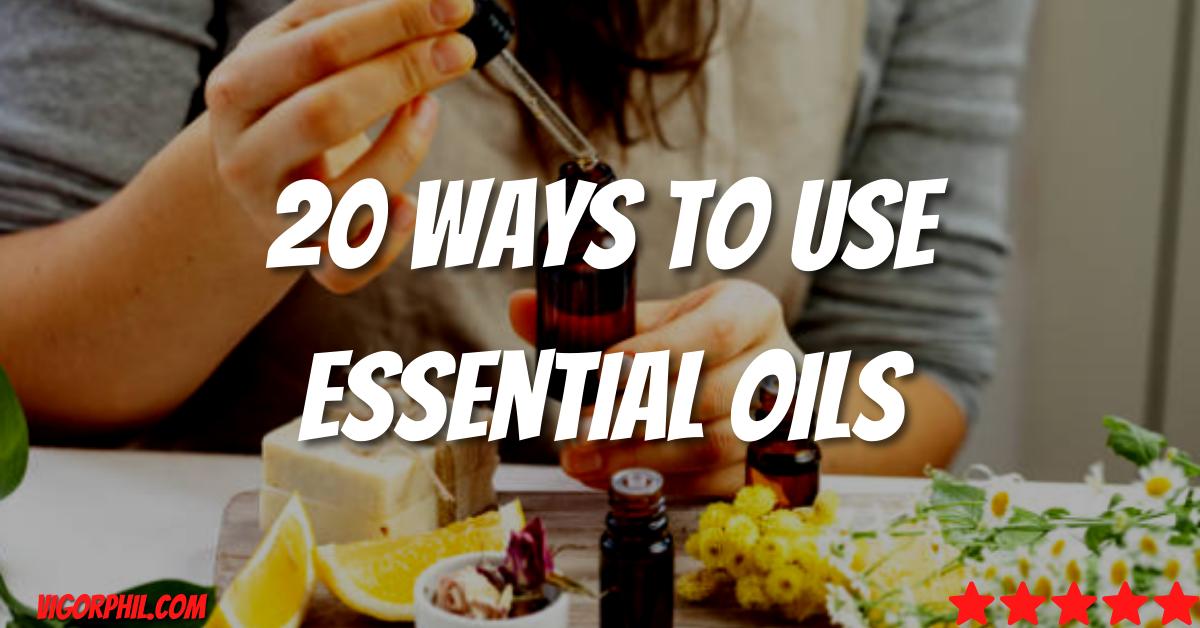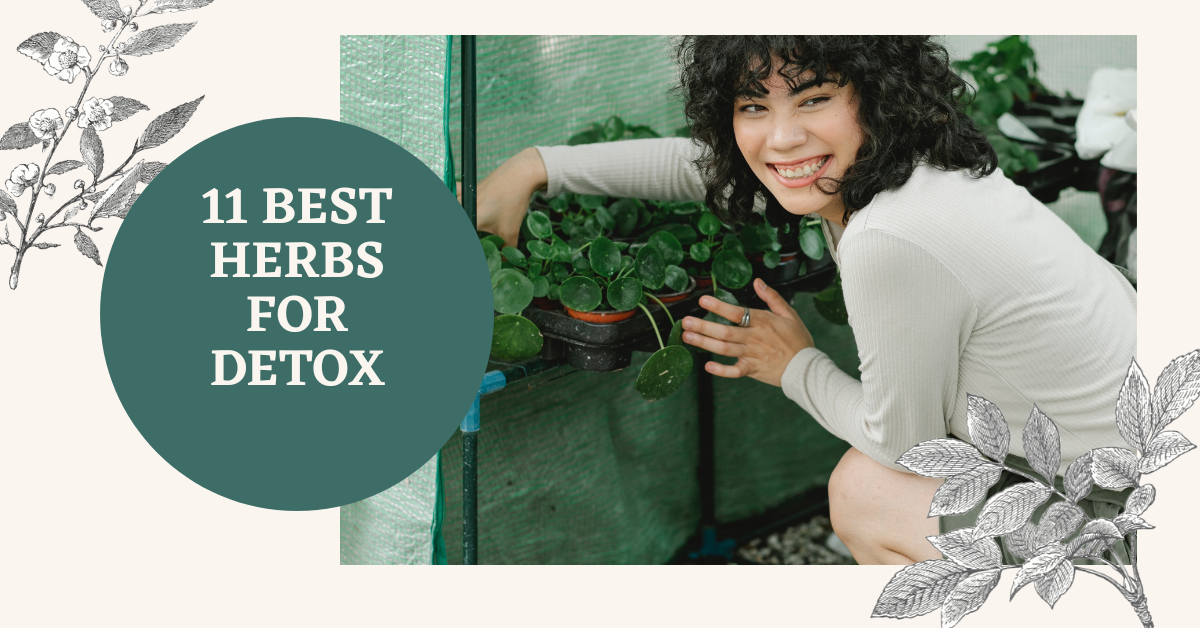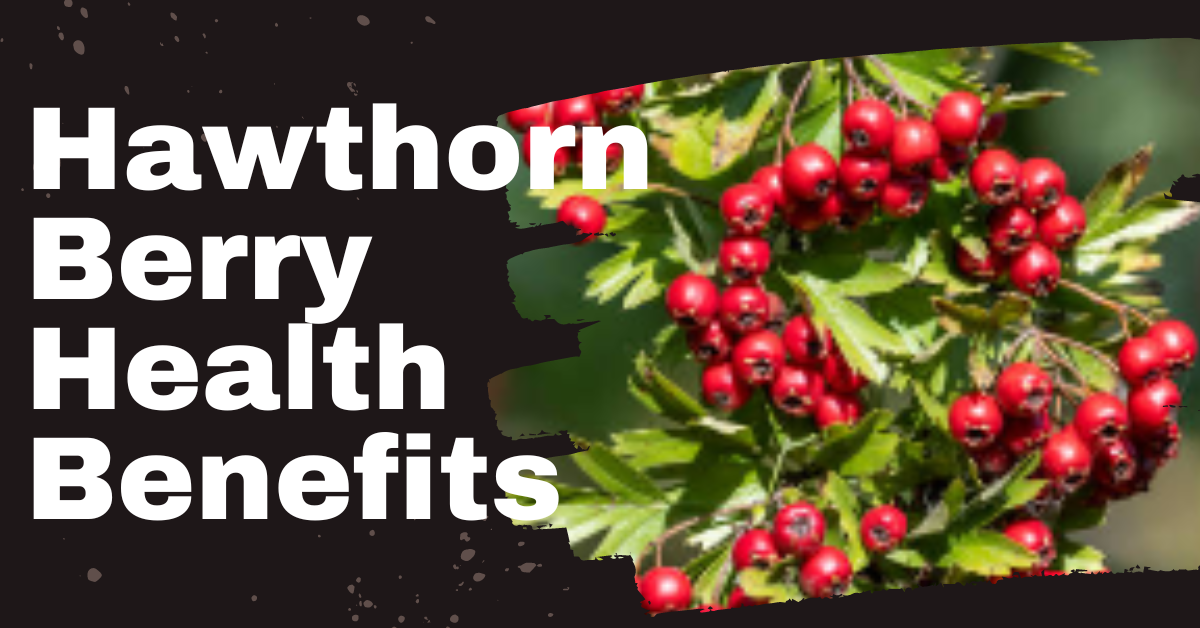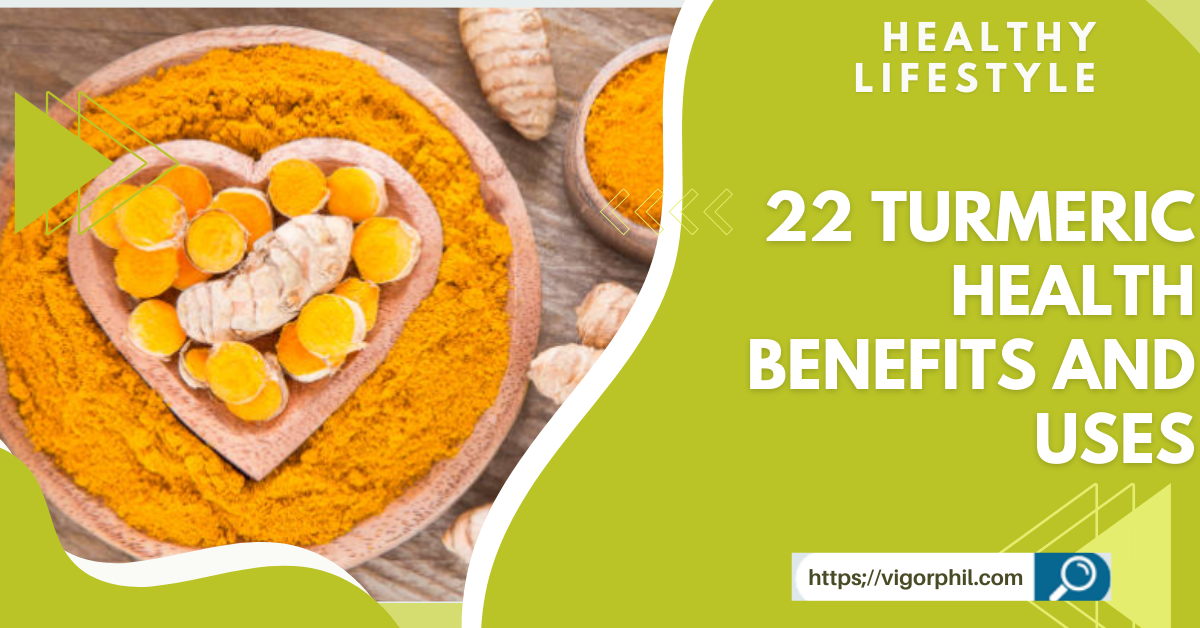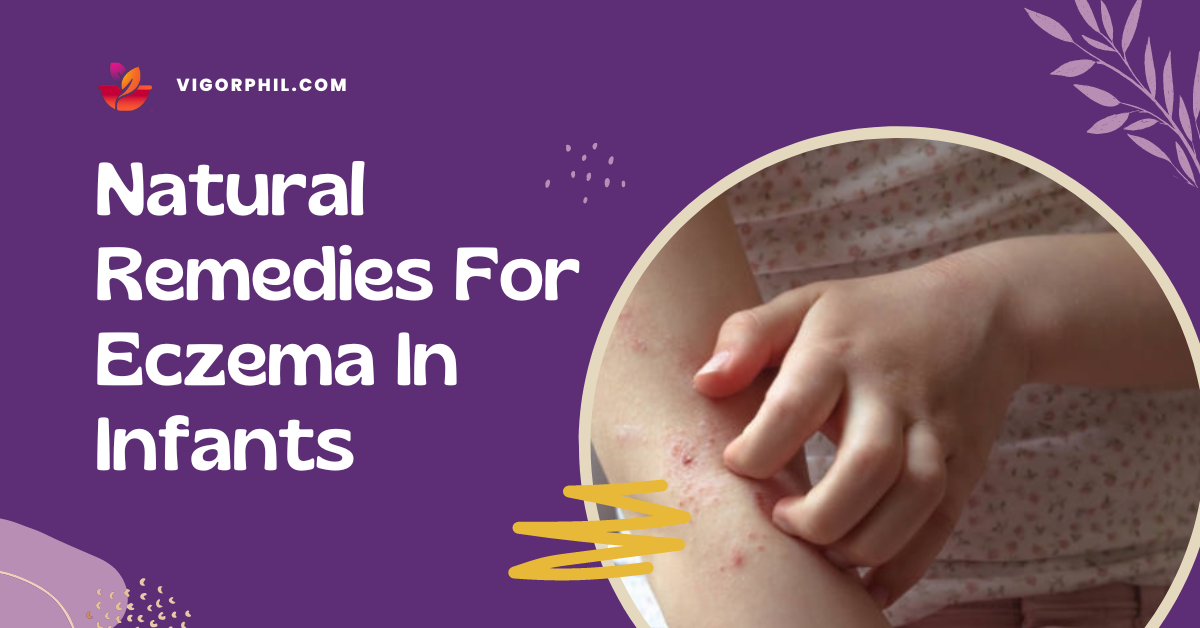Essential oils are highly concentrated plant extracts that are known for their therapeutic benefits. They have been used for centuries in traditional medicine, and continue to be popular today for their wide range of uses. From aromatherapy and massage to skin care and cleaning, there are countless ways to incorporate essential oils into your daily routine.
They can be used for physical and emotional wellness, for skincare, for personal care and even for cleaning. In this article, we will explore 20 different ways to use essential oils to improve your overall health and well-being.
From soothing stress and anxiety to promoting better sleep and improving respiratory health, essential oils can be used in many ways to help you feel your best.
1. essential oils as Aromatherapy
Aromatherapy is a form of alternative medicine that uses essential oils to promote physical and emotional well-being. Essential oils are extracted from plants, flowers, and other natural sources, and are believed to have healing properties.
Aromatherapy is typically administered by inhalation, either through a diffuser or by directly inhaling the oils. It can also be applied topically, by diluting the oils in a carrier oil and massaging them into the skin.
Some of the most commonly used essential oils in aromatherapy include lavender, peppermint, eucalyptus, and lemon. Aromatherapy is used to treat a wide range of conditions, including stress, anxiety, depression, and insomnia, as well as physical conditions such as headaches, muscle pain, and skin conditions.
Add a few drops of essential oils to a diffuser or a bowl of steaming water to create a soothing and relaxing environment.
It is generally considered safe, but it is important to use essential oils responsibly and with the guidance of a qualified aromatherapist.
2. essential oils used for Massage
Massage is a popular way to use essential oils as it allows for the oils to be absorbed through the skin and also inhaled. The essential oils can be added to massage oils or lotions and used as part of the massage therapy session.
The therapist will typically select essential oils based on the client’s needs and preferences. The essential oils are believed to have therapeutic properties that can help to relieve muscle tension, reduce stress and anxiety, and improve overall well-being.
One of the most common massage techniques used in aromatherapy is Swedish massage. This type of massage uses long strokes, kneading, and circular motions to relax the muscles and improve circulation. Essential oils such as lavender, peppermint, and eucalyptus are often used in Swedish massage to provide additional benefits.
Another technique is deep tissue massage which is used to target specific areas of muscle tension, it is best to use essential oils with warming properties such as black pepper, ginger, and rosemary.
Add a few drops of essential oils to your bathwater for a relaxing and rejuvenating soak
Aromatherapy massage is generally considered safe, but it is important to use essential oils responsibly and under the guidance of a qualified massage therapist or aromatherapist. It is also crucial to inform your therapist of any health conditions or medications you are taking before receiving a massage with essential oils.
3. essential oils used for Bath
Taking a bath with essential oils is a great way to relax and rejuvenate the mind and body. Essential oils can be added to bathwater to provide a variety of benefits, including stress relief, improved circulation, and relief from muscle and joint pain.
To use essential oils in a bath, simply add a few drops of the oil to a carrier oil, such as coconut oil, and then add the mixture to the bathwater. It’s important to note that essential oils can be very potent, so it’s important to use them in small amounts and to be mindful of any potential skin irritation.
Add a few drops of essential oils to your bathwater for a relaxing and rejuvenating soak
Also, some essential oils should not be used in the bath, as they can be toxic when absorbed through the skin, so it’s important to do your research and use oils that are safe for topical use.
4. essential oils used in Skin care
Skin care is an important part of overall health and wellness, and essential oils can be a natural and effective way to enhance your skin care routine. Essential oils are highly concentrated plant extracts that are known for their therapeutic properties. They can be used in a variety of ways to nourish and protect the skin, including as a cleanser, toner, moisturizer, and spot treatment.
Some popular essential oils for skin care include lavender, tea tree, and peppermint. Lavender is known for its soothing and calming properties, and can be used to reduce redness and inflammation. Tea tree oil is a natural antiseptic and can help to clear up acne and other skin blemishes. Peppermint is refreshing and invigorating, and can be used to stimulate blood flow to the skin for a healthy, radiant complexion.
To use essential oils for skin care, you can add a few drops to your favorite lotions or creams, or mix them with a carrier oil like coconut oil or jojoba oil. You can also use them in a homemade face mask or as a spot treatment for specific skin concerns. It’s always recommended to do a patch test first before applying the oils to your face.
It’s important to note that essential oils are highly concentrated and should be used with care. It’s always recommended to dilute them with a carrier oil and avoid using them undiluted on the skin. Also, it’s good to be aware of any allergies or sensitivities you may have before using essential oils on your skin
5. essential oil used for hair care
Hair care is an important aspect of overall grooming and wellness, and essential oils can be a natural and effective way to enhance your hair care routine. Essential oils are highly concentrated plant extracts that are known for their therapeutic properties and can be used to nourish and protect the hair and scalp.
Some popular essential oils for hair care include lavender, rosemary, and peppermint. Lavender is known for its soothing properties and can help to promote hair growth and reduce hair loss. Rosemary is a natural hair tonic that can improve circulation and strengthen the hair shaft. Peppermint is invigorating and can help to stimulate the scalp for healthy hair growth.
To use essential oils for hair care, you can add a few drops to your shampoo or conditioner, or mix them with a carrier oil like coconut oil or argan oil. You can also use them in a homemade hair mask or as a scalp treatment. It’s always recommended to do a patch test first before applying the oils to your hair, and also to dilute them with a carrier oil before use.
It’s important to note that essential oils are highly concentrated and should be used with care. It’s always recommended to dilute them with a carrier oil, and avoid using them undiluted on the hair. Also, it’s good to be aware of any allergies or sensitivities you may have before using essential oils on your hair. It’s also important to check if the essential oils you’re using are safe for hair use and not all of them are.
6. essential oil used for Cleaning
Cleaning with essential oils is a natural and effective way to freshen up your home while also benefitting from their therapeutic properties. Essential oils are highly concentrated plant extracts that are known for their antimicrobial, antiseptic, and deodorizing properties, making them great natural cleaning agents.
Some popular essential oils for cleaning include lemon, tea tree, and peppermint. Lemon is known for its fresh citrus scent and can be used to naturally clean and deodorize surfaces. Tea tree oil is a natural antiseptic and can be used to clean and disinfect surfaces, particularly in the bathroom and kitchen. Peppermint is invigorating and can be used to freshen up a room and combat odors.
To use essential oils for cleaning, you can add a few drops to a spray bottle filled with water and use it as a natural all-purpose cleaner. You can also add a few drops to your laundry detergent or add them to a diffuser to freshen up the air in your home.
It’s always recommended to dilute essential oils before using them for cleaning as they are highly concentrated, and also to be aware of any allergies or sensitivities you may have before using them. Also, it’s important to check if the essential oils you’re using are safe for cleaning purpose and not all of them are. Some essential oils may be toxic or cause skin irritation and should be avoided.
7. essential oil used As Insect repellent
Using essential oils as an insect repellent is a natural and effective way to keep bugs at bay while also benefitting from their therapeutic properties. Essential oils are highly concentrated plant extracts that are known for their insect-repelling properties, and can be used to create a natural and non-toxic insect repellent.
Some popular essential oils for insect repellent include citronella, lemongrass, and eucalyptus. Citronella is known for its ability to repel mosquitoes and other flying insects. Lemongrass has been found to be effective against mosquitoes, ticks, and fleas. Eucalyptus has been found to repel mosquitoes, flies, and other flying insects.
To use essential oils as an insect repellent, you can add a few drops to a carrier oil like coconut oil or almond oil, and apply the mixture to your skin. You can also add a few drops to a diffuser to repel bugs in your indoor space.
It’s always recommended to dilute essential oils before using them as insect repellent because they are highly concentrated, also to do a patch test first before applying the oils to your skin, and also to be aware of any allergies or sensitivities you may have before using them. Also, it’s important to check if the essential oils you’re using are safe for skin use and not all of them are.
It’s good to note that essential oils are not as effective as commercial insect repellent and may need to be reapplied more frequently. It’s also important to be aware of the specific species of bugs in your area and the recommended repellents for them.
8. essential oil used for Stress relief
One way to use essential oils for stress relief is by diffusing them in the air. This can be done using an essential oil diffuser, which disperses the oils into the air as a fine mist. Some popular essential oils for stress relief include lavender, peppermint, and bergamot.
Another way to use essential oils for stress relief is by applying them topically to the skin. This can be done by diluting the oils in a carrier oil, such as coconut oil, and then massaging them into the skin. This method can help to promote relaxation and a sense of calm.
Additionally, you can also inhale some essential oils by adding few drops on a handkerchief or tissues, and inhaling it.
9. essential oil used as sleep aid
One way to use essential oils for sleep aid is by diffusing them in the air before bedtime. Some popular essential oils for promoting sleep include lavender, chamomile, and bergamot.
These oils are known for their calming and relaxing properties and can help to create a soothing environment for sleep. Another way to use essential oils for sleep aid is by adding a few drops to a warm bath before bed. This allows the oils to be absorbed through the skin, helping to promote relaxation and improve sleep.
Additionally, you can also apply a few drops of essential oil on your pillowcase or on a cotton ball placed near your pillow. Inhaling the oils as you sleep can help to calm the mind and promote a more restful sleep.
It is important to note that essential oils should always be diluted before use and it is recommended to consult with a healthcare professional before using essential oils as a sleep aid, especially if you are pregnant, breastfeeding, or have any underlying medical conditions.
10. essential oil used for air purification
One way to use essential oils for air purification is by diffusing them in the air. This can be done using an essential oil diffuser, which disperses the oils into the air as a fine mist.
Some popular essential oils for purifying the air include tea tree, eucalyptus, and peppermint. These oils are known for their ability to neutralize odors and disinfect the air. Another way to use essential oils for air purification is by adding a few drops to a bowl of steaming water and then inhaling the steam.
This can help to clear the sinuses and improve respiratory function. Additionally, you can also add a few drops of essential oil to a spray bottle filled with water and misting the air, it can help to freshen the air and eliminate unpleasant odors.
It’s important to note that essential oils should be used with caution around pets, children and people with respiratory conditions and it’s recommended to consult with a healthcare professional before using essential oils as air purification method, especially if you have any underlying medical conditions.
11. essential oil used for respiratory support
One way to use essential oils for respiratory support is by diffusing them in the air using an essential oil diffuser. Some popular essential oils for respiratory support include eucalyptus, peppermint, and tea tree.
These oils are known for their ability to clear the airways, reduce inflammation, and improve breathing. Another way to use essential oils for respiratory support is by adding a few drops to a bowl of steaming water and then inhaling the steam.
This can help to clear the sinuses and improve respiratory function. Additionally, you can also apply a few drops of essential oil topically to the chest and throat. Dilute the oil with a carrier oil and massage it gently, this can help to relieve congestion and improve breathing.
It’s important to note that essential oils should be used with caution around pets, children and people with respiratory conditions and it’s recommended to consult with a healthcare professional before using essential oils as respiratory support, especially if you have any underlying medical conditions or allergies.
12. essential oil used for digestive support
One way to use essential oils for digestive support is by using them topically, by massaging a few drops of the oil (diluted with a carrier oil) on the stomach area.
Some popular essential oils for digestive support include peppermint, ginger, and fennel. These oils are known for their ability to soothe stomach discomfort and improve digestion. Another way to use essential oils for digestive support is by adding a few drops to a glass of water and drinking it.
This can help to soothe the stomach and improve digestion. Some essential oils like peppermint, ginger and fennel are also used in teas for digestive support. Inhalation of essential oils can also be helpful for digestive support. You can add a few drops of essential oil to a bowl of steaming water and inhale the steam or add few drops to a handkerchief and inhale it.
Peppermint, ginger and fennel oil are also known to be helpful in this way. It’s important to note that essential oils should be used with caution and it’s recommended to consult with a healthcare professional before using essential oils as digestive support, especially if you have any underlying medical conditions or allergies.
13. essential oil used for immune support
One way to use essential oils for immune support is by diffusing them in the air using an essential oil diffuser. Some popular essential oils for immune support include lemon, tea tree, and oregano.
These oils are known for their ability to boost the immune system and provide protection against harmful pathogens. Another way to use essential oils for immune support is by applying them topically to the skin.
This can be done by diluting the oils in a carrier oil, such as coconut oil, and then massaging them into the skin, particularly on the soles of the feet and the spine. This method can help to boost the immune system and provide protection against harmful pathogens. Inhalation of essential oils can also be helpful for immune support.
You can add a few drops of essential oil to a bowl of steaming water and inhale the steam or add few drops to a handkerchief and inhale it.
It’s important to note that essential oils should be used with caution and it’s recommended to consult with a healthcare professional before using essential oils as immune support, especially if you have any underlying medical conditions or allergies. It is also important to keep in mind that essential oils are not a substitute for vaccines or other medical treatments.
14. essential oil used for pain relief
One way to use essential oils for pain relief is by applying them topically to the affected area. This can be done by diluting the oils in a carrier oil, such as coconut oil, and then massaging them into the skin.
Some popular essential oils for pain relief include peppermint, lavender, and ginger. These oils are known for their ability to reduce inflammation and provide a soothing sensation to the skin.
Another way to use essential oils for pain relief is by adding a few drops to a warm compress and applying it to the affected area. This can help to increase blood flow to the area and provide a soothing sensation. Inhalation of essential oils can also be helpful for pain relief.
You can add a few drops of essential oil to a bowl of steaming water and inhale the steam or add few drops to a handkerchief and inhale it. Peppermint, lavender, and ginger are also known to be helpful in this way.
It’s important to note that essential oils should be used with caution and it’s recommended to consult with a healthcare professional before using essential oils for pain relief, especially if you have any underlying medical conditions or allergies.
Additionally, it is important to note that essential oils should not be used as a substitute for prescribed medication and it is important to follow the advice of a healthcare professional.
15. essential oil used for wound care
One way to use essential oils for wound care is by applying them topically to the affected area. This can be done by diluting the oils in a carrier oil, such as coconut oil, and then applying it to the wound.
Some popular essential oils for wound care include tea tree, lavender and helichrysum. Tea tree oil is known for its antiseptic properties, making it effective in preventing infection.
Lavender oil is known for its anti-inflammatory and pain-relieving properties. Helichrysum oil is known for its ability to promote skin healing and reduce scarring.
Another way to use essential oils for wound care is by adding a few drops to a bandage or dressing, which can help to prevent infection and promote healing.
It’s important to note that essential oils should be used with caution and it’s recommended to consult with a healthcare professional before using essential oils for wound care, especially if you have any underlying medical conditions or allergies.
Additionally, it is important to note that essential oils should not be used as a substitute for prescribed medication and it is important to follow the advice of a healthcare professional. It is also important to keep the wound clean and covered with a sterile bandage.
It’s important to note that the use of essential oils on open wounds is not recommended, as it can cause irritation, allergic reactions, and other complications. It is recommended that you only apply essential oils to closed wounds after they have started to heal.
16. essential oil used for personal care
One way to use essential oils for personal care is by adding a few drops to your bathwater for a relaxing and rejuvenating experience. Some popular essential oils for personal care include lavender, peppermint, and eucalyptus.
These oils are known for their ability to promote relaxation, improve circulation, and soothe the skin. Another way to use essential oils for personal care is by adding a few drops to your lotions or creams. This can help to nourish and moisturize the skin while also providing a pleasant fragrance.
You can also use essential oils in your hair care routine by adding a few drops to your shampoo or conditioner, this can help to strengthen and nourish the hair, and promote hair growth. Inhalation of essential oils can also be helpful for personal care.
You can add a few drops of essential oil to a bowl of steaming water and inhale the steam or add few drops to a handkerchief and inhale it. Peppermint, lavender, and eucalyptus are also known to be helpful in this way.
It’s important to note that essential oils should be used with caution and it’s recommended to consult with a healthcare professional before using essential oils for personal care, especially if you have any underlying medical conditions or allergies.
Additionally, it is important to follow the instructions for usage, dilution and application that come with the oils.
17. essential oil used for Candles
Candles are an effective way to use essential oils to enhance the ambiance of a room and create a relaxing and soothing atmosphere. Essential oils can be added to the wax of the candle, or added to the wick, so that the oil is diffused into the air as the candle burns.
To make your own candles with essential oils, you can follow these basic steps:
- Melt the wax in a double boiler or a heat-proof container over low heat.
- Once the wax is melted, add the essential oil of your choice to the wax, usually recommended to add around 10-15 drops of oil per 8 oz of wax.
- Stir the wax and oil together until they are well mixed.
- Pour the wax mixture into candle molds or jars and let it cool and harden.
- Once the candle is set, you can light it to enjoy the fragrance and benefits of the essential oils.
Popular essential oils for candles making includes lavender, peppermint, citrus oils, and cinnamon. These oils are known for their ability to promote relaxation, refresh the air, and create a pleasant atmosphere.
When making candles with essential oils, it is important to use high-quality, pure essential oils and to be aware that certain oils may cause irritation or allergic reactions when inhaled.
It’s recommended to consult with a healthcare professional before using essential oils for candles making, especially if you have any underlying medical conditions or allergies.
It is also important to use appropriate wick size and the right amount of essential oils, as too much oil can cause the candle to burn unevenly, produce soot, or even cause a fire hazard.
18. essential oil used for Hand sanitizers
Hand sanitizers are an effective way to use essential oils to keep your hands clean and protected from harmful germs. Essential oils can be added to the base of the hand sanitizer to provide additional benefits, such as moisturizing and soothing the skin.
To make your own hand sanitizer with essential oils, you can follow these basic steps:
- Mix together a base of alcohol (at least 60% alcohol content) and aloe vera gel in a clean container.
- Add a few drops of essential oil of your choice, such as tea tree, lavender, or peppermint oil.
- Stir the ingredients together until they are well mixed.
- Pour the mixture into a clean container with a pump or a flip-top cap.
- Use as needed to clean and sanitize your hands.
It’s important to note that essential oils should be used with caution and it’s recommended to consult with a healthcare professional before using essential oils in hand sanitizer, especially if you have any underlying medical conditions or allergies.
Additionally, it is important to follow the instructions for usage, dilution and application that come with the oils, and ensure that the alcohol percentage is at least 60% as per the WHO guidelines for hand sanitizers during pandemics.
Also, hand sanitizers made with essential oils should not be used on children under 2 years of age, or on open wounds or sensitive skin. If you have any irritation or adverse reactions, stop using the sanitizer and consult with a healthcare professional.
It is also important to note that, while hand sanitizers can help to reduce the spread of germs, they should not be used as a replacement for proper handwashing with soap and water.
Keep in mind that the COVID-19 virus is primarily spread through respiratory droplets, and hand sanitizers alone may not be effective in preventing the spread of the virus. It is important to continue following the guidance of public health officials and to practice good hygiene, such as washing your hands regularly.
19. essential oil used for Room sprays
Room sprays are an effective way to use essential oils to freshen and enhance the ambiance of a room. Essential oils can be added to a base solution, such as water or alcohol, to provide a pleasant fragrance and additional benefits, such as promoting relaxation or disinfecting the air.
To make your own room spray with essential oils, you can follow these basic steps:
- Mix together water or alcohol (such as witch hazel or vodka) and a few drops of essential oil of your choice in a clean spray bottle.
- Shake the bottle well to mix the ingredients.
- Spray the mixture into the air as needed to freshen and enhance the ambiance of a room.
Popular essential oils for room sprays includes lavender, peppermint, citrus oils, and cinnamon. These oils are known for their ability to promote relaxation, refresh the air, and create a pleasant atmosphere.
When making room sprays with essential oils, it is important to use high-quality, pure essential oils and to be aware that certain oils may cause irritation or allergic reactions when inhaled. It’s recommended to consult with a healthcare professional before using essential oils for room sprays, especially if you have any underlying medical conditions or allergies.
It is also important to use appropriate dilution and the right amount of essential oils, as too much oil can cause irritation or allergic reactions. It is also important to shake the bottle well before use and to use it only in well-ventilated areas.
Keep in mind that room sprays are not a replacement for proper cleaning and disinfection. It is important to continue following the guidance of public health officials and to practice good hygiene, such as washing your hands regularly
20. essential oil used for pet care
Essential oils can be used in pet care to promote health and well-being, however, it is important to use them with caution and to consult with a veterinarian before using them on your pets. Essential oils can be toxic to animals if used improperly, and some oils may be more toxic than others.
One way to use essential oils for pet care is by adding a few drops to a diffuser and diffusing them into the air. This can help to freshen the air and promote relaxation for your pet. Some popular essential oils for pet care include lavender, peppermint and chamomile. These oils are known for their calming and relaxing properties.
Another way to use essential oils for pet care is by adding a few drops to your pet’s shampoo or by diluting it with a carrier oil and massaging it into the skin, particularly on the soles of the feet, ears and spine. Essential oils like lavender, peppermint, and chamomile are known for their ability to soothe the skin and promote relaxation.
You can also add a few drops of essential oils to your pet’s bedding, this can help to freshen the air and promote relaxation for your pet.
It’s important to note that essential oils should be used with caution and it’s recommended to consult with a veterinarian before using essential oils for pet care, especially if you have any underlying medical conditions or allergies.
Additionally, it is important to follow the instructions for usage, dilution and application that come with the oils and never use undiluted oils on your pets. The use of essential oils on cats should be avoided as they are more sensitive to the effects of essential oils than dogs.
conclusion
In conclusion, essential oils have a wide range of applications and benefits. They can be used for a variety of purposes such as stress relief, sleep aid, air purification, respiratory support, digestive support, immune support, pain relief, wound care, personal care, candles, hand sanitizer, room spray and pet care.
They can be used in various ways like diffusing, topically, adding to bathwater, lotions, creams, shampoo, candle making, adding to a warm compress, and adding to a bandage or dressing.
However, it is important to use them with caution and consult with a healthcare professional before using them, especially if you have any underlying medical conditions or allergies.
Additionally, it is important to follow the instructions for usage, dilution and application that come with the oils. Essential oils can be a natural and effective alternative for many things, but it’s important to remember that they are not a substitute for prescribed medication and it is important to follow the advice of a healthcare professional.
FREQUENTLY ASKED QUESTIONS ON ESSENTIAL OILS
How do you use essential oils for beginners?
There are a few basic ways to use essential oils for beginners:
Aromatherapy: Add a few drops of essential oil to a diffuser or vaporizer to release the fragrance into the air. This can help to create a calming atmosphere and promote relaxation.
Topical application: Dilute essential oil with a carrier oil such as coconut oil or jojoba oil and apply it to the skin. Essential oils can be used for massage, as a moisturizer, or to treat specific skin conditions.
Inhalation: Place a few drops of essential oil on a tissue or handkerchief and inhale the fragrance. This can help to clear nasal congestion and relieve stress.
It’s important to note that essential oils should always be used with caution, and it’s recommended to do a patch test before using it on your skin and also to check the oil is pure and not adulterated. Also, it’s advisable to consult with a qualified aromatherapist or healthcare provider before using essential oils for therapeutic purposes.
Do you need to mix essential oils with water?
Essential oils are highly concentrated and should not be used undiluted or mixed with water. Essential oils and water do not mix well together, as oils and water have different densities and will separate.
Instead, essential oils are typically diluted with a carrier oil, such as coconut oil, jojoba oil, or sweet almond oil, before being applied to the skin. This helps to reduce the concentration of the essential oil and prevent skin irritation.
For inhalation, you can add a few drops of essential oil to a diffuser or vaporizer, which will disperse the oil into the air in the form of fine mist, however, you should not add water to the diffuser.
In some cases, you can add essential oils to bath water, but it’s not recommended to mix them with water directly. Instead, you can add them to a carrier oil or emulsifier such as epsom salt, and then add that mixture to the bath water.
In summary, mixing essential oils with water is not recommended. They should always be diluted with a carrier oil before being applied to the skin and added to an emulsifier or carrier oil before adding them to bath water.
How do you apply essential oils directly to skin?
Here are some general guidelines for applying essential oils directly to the skin:
Dilute the essential oil: Essential oils should always be diluted with a carrier oil, such as coconut oil, jojoba oil, or sweet almond oil, before being applied to the skin. A good starting point is to use a 2-3% dilution, which means adding 2-3 drops of essential oil to 1 teaspoon (about 5 mL) of carrier oil.
Do a patch test: Before using an essential oil on a large area of the skin, it’s recommended to do a patch test by applying a small amount of the diluted oil to a small area of skin, such as the inner forearm. If there’s no irritation or rash after 24 hours, it’s likely safe to use.
Apply the oil: Once the essential oil is diluted, it can be applied to the skin. You can apply it to specific areas, such as temples for headaches or the bottoms of the feet for sleep, or you can use it for a full-body massage.
Be aware of photosensitivity: Some essential oils can make the skin more sensitive to sunlight, so it’s important to be aware of which oils have this property, and avoid sun exposure for at least 12 hours after applying them.
Consult a healthcare professional: It’s recommended to consult with a qualified aromatherapist or healthcare provider before using essential oils for therapeutic purposes, especially if you have any medical condition or are pregnant or breastfeeding.
Keep in mind that essential oils are highly concentrated and should be used with caution. Always follow the recommended dilution ratios and never use undiluted essential oils on the skin.
Is it OK to use essential oils everyday?
It is generally safe to use essential oils on a daily basis when used appropriately and in moderate amounts. However, the frequency and method of use will depend on the specific essential oil and the intended use.
For example, certain essential oils such as lavender or peppermint can be used daily for aromatherapy or in small dilutions for topical use to help with relaxation or headaches. Other oils such as lemon or grapefruit can be used daily as a natural cleaning agent or in small dilutions for topical use to help with skin tone or digestion.
However, it’s important to keep in mind that some essential oils are not recommended for daily use, particularly those that are considered “hot” oils, like oregano, clove, or cinnamon. They may cause skin irritation or sensitization when used in high concentrations or for prolonged periods of time.
It’s also important to note that some essential oils are considered toxic if used in high doses and should be avoided entirely, such as pennyroyal, wormwood, and rue.
It’s always recommended to follow the recommended dilution ratios and to consult with a qualified aromatherapist or healthcare provider before using essential oils for therapeutic purposes, especially if you have any medical condition or are pregnant or breastfeeding.
In summary, while many essential oils can be used safely on a daily basis, it’s important to use them appropriately and in moderate amounts, and to be aware of the specific properties of each oil.
Can essential oils darken skin?
There is no scientific evidence that suggests that essential oils can darken the skin. In fact, some essential oils, such as lavender, lemon and peppermint, are known to have lightening properties, and can be used in skincare to help even out skin tone and reduce dark spots.
However, it’s important to note that some essential oils can cause skin irritation or sensitivity, which can lead to redness, itching, or a rash, especially when used in high concentrations or not properly diluted. If you have sensitive skin, it’s recommended to do a patch test before using the essential oil, and to use a low dilution of 1-2%.
Also, some essential oils can increase the skin’s sensitivity to UV rays, leading to increased risk of sun damage and sunburns. It’s important to be aware of which oils have this property, and avoid sun exposure for at least 12 hours after applying them.
It’s also important to note that some essential oils are not recommended for use on certain skin types, such as oily skin, and some are not recommended for use during pregnancy or while breastfeeding. It’s always recommended to consult with a qualified aromatherapist or healthcare provider before using essential oils for therapeutic purposes.
In summary, essential oils themselves do not darken the skin, but they can cause skin irritation or sensitivity, leading to redness or a rash, specially when not properly diluted or when used in high concentrations. Also, it’s important to keep in mind that some essential oils can increase the skin’s sensitivity to UV rays and some are not recommended for certain skin types or during pregnancy/breastfeeding.
What are the side effects of essential oils?
Essential oils are highly concentrated plant extracts, and while they have many benefits when used appropriately, they can also have some side effects when used improperly.
Skin irritation: Some essential oils, particularly those that are considered “hot” oils, such as oregano, clove, or cinnamon, can cause skin irritation or sensitization when used in high concentrations or for prolonged periods of time.
Allergic reactions: Some people may be allergic to certain essential oils and may experience a rash, itching, or difficulty breathing when exposed to them.
Phototoxicity: Some essential oils can increase the skin’s sensitivity to UV rays, leading to increased risk of sun damage and sunburns. It’s important to be aware of which oils have this property, and avoid sun exposure for at least 12 hours after applying them.
Interactions with medication: Some essential oils can interact with certain medications, such as blood thinners, and can cause serious side effects. If you’re taking any medication, it’s important to consult with a healthcare provider before using essential oils.
Ingestion: Essential oils should never be ingested unless under the guidance of a healthcare professional, as they are highly concentrated and can be toxic in high doses.
It’s important to keep in mind that essential oils are highly concentrated and should be used with caution. Always follow the recommended dilution ratios and never use undiluted essential oils on the skin.
It’s also recommended to consult with a qualified aromatherapist or healthcare provider before using essential oils for therapeutic purposes, especially if you have any medical condition or are pregnant or breastfeeding.
How can you tell if essential oil is real?
It can be difficult to tell if an essential oil is real or not, as there are many counterfeit products on the market. Here are a few ways to determine the authenticity of an essential oil:
1. Check the label: Make sure the label clearly states the botanical name of the plant the oil is derived from, and the country of origin. Some essential oils have common names that are used for different plants, so it’s important to know the botanical name to ensure you’re getting the correct oil.
2. Check the price: Essential oils are derived from plants, and the cost of growing, harvesting, and distilling the plant material can vary. If the price of an essential oil seems too good to be true, it’s likely that it’s not a pure product.
3. Check for certifications: Look for certifications from reputable organizations, such as CPTG (Certified Pure Therapeutic Grade) or USDA organic, that indicate that the oil has been tested for purity and quality.
4. Research the company: Look up the company that sells the essential oil and see if they have a good reputation and if they provide information about the sourcing and distillation process of their oils.
5. Compare with known pure oil: If you have a pure essential oil, you can compare the color, smell and viscosity of the oil you want to test with the known pure oil, if they are significantly different, it might indicate that the oil you want to test is not pure.
6. Consult a professional: If you have any doubts, consult with a qualified aromatherapist or healthcare provider who has experience in essential oils and can help you determine the authenticity of an essential oil.
It’s important to keep in mind that many essential oils are adulterated or blended with other substances, so it’s essential to make sure that you are purchasing a pure, high-quality product.
How long do essential oils last?
The shelf life of essential oils can vary depending on the specific oil and the storage conditions. In general, essential oils can last for several years if stored properly. Here are a few tips to help extend the shelf life of your essential oils:
1. Store in a cool, dark place: Essential oils should be stored in a cool, dark place, away from direct sunlight and heat. This will help to prevent oxidation and deterioration of the oils.
Keep the lids tight: Make sure to keep the lids tightly closed on your essential oils to prevent evaporation and oxidation.
2. Use amber or cobalt blue bottles: These types of bottles offer better UV protection than clear or frosted glass bottles.
3. Avoid storing in plastic containers: Essential oils can dissolve or interact with plastic, potentially altering the composition of the oil. Glass or stainless steel containers are recommended.
4. Check for signs of spoilage: Essential oils should have a consistent color and aroma throughout their shelf life. If you notice any changes in color, aroma, or consistency, it’s best to discard the oil, as it may have spoiled.
5. Use a clean dropper: Always use a clean dropper or applicator to extract the oil from the bottle to prevent contamination and to extend the shelf life of the oil.
It’s important to note that essential oils are highly concentrated plant extracts and can be expensive, so it’s important to store them properly to maximize their shelf life. Also, it’s always recommended to check the expiration date or the date of distillation on the bottle before using the oil.
What is the difference between pure essential oil and essential oil?
The difference between pure essential oil and essential oil is related to the quality and purity of the oil.
A pure essential oil is an oil that is obtained from a single botanical source through a process of distillation or expression, and contains only the natural compounds of that plant. They are free from any chemical or synthetic substances, and are considered to be the most therapeutic grade of essential oils.
An essential oil, on the other hand, can be a mixture of different oils or can have been adulterated with other substances, such as carrier oils, solvents, or synthetic fragrances. These oils may not have the same therapeutic properties as a pure essential oil and may cause irritation or allergic reactions.
It’s important to note that not all essential oils sold in the market are pure, and many are adulterated or blended with other substances to increase their volume, change their scent, or reduce their cost. Therefore, it’s essential to make sure that you are purchasing a pure, high-quality product, by checking the label, the price, the certifications, the company reputation, and consulting a professional if you have any doubts.
In summary, a pure essential oil is a natural, high-quality oil that is obtained from a single botanical source and is free from any chemical or synthetic substances. An essential oil can be a mixture of different oils or adulterated with other substances, and may not have the same therapeutic properties as a pure essential oil.
Why is it called essential oil?
The term “essential oil” is used to describe the concentrated, volatile, aromatic liquids obtained from the flowers, leaves, seeds, bark, roots, and other parts of plants. These oils are called “essential” because they contain the essence or the characteristic fragrance of the plant from which they are derived.
The term “essential” also refers to the fact that these oils are considered to be the “essence” of the plant, and they contain the plant’s most important chemical compounds, such as terpenes, esters, and ethers. These compounds are responsible for the plant’s therapeutic properties and they are responsible for the characteristic fragrance of the plant.
The use of essential oils can be traced back to ancient cultures, such as Egyptians, Greeks, and Romans, who used these oils for medicinal, cosmetic, and religious purposes.
In summary, the term “essential oil” is used to describe the concentrated, volatile, aromatic liquids obtained from the flowers, leaves, seeds, bark, roots, and other parts of plants, and it’s called “essential” because it contains the essence or the characteristic fragrance of the plant and the most important chemical compounds that are responsible for the plant’s therapeutic properties.
Which oil makes skin glow?
There are several essential oils that can help to make the skin glow, here are a few examples:
1. Jojoba oil: Jojoba oil is a light and non-greasy oil that is easily absorbed by the skin. It is rich in vitamins and minerals, such as vitamin E and B-complex vitamins, which help to nourish and hydrate the skin, making it look more radiant.
2. Rosehip oil: Rosehip oil is known for its high levels of antioxidants, such as vitamin C and A, which can help to reduce the appearance of fine lines and wrinkles, and improve the skin’s texture and tone.
Apricot oil: Apricot oil is rich in vitamins A and E, which are known to nourish and hydrate the skin, leaving it looking soft and smooth.
3. Sweet Almond Oil: Almond oil is rich in fatty acids and vitamins that can nourish and moisturize the skin, making it look more supple and youthful.
4. Geranium oil: Geranium oil is known for its ability to balance the skin’s natural oils, leaving it looking hydrated and refreshed. It can also help to reduce the appearance of redness and uneven skin tone.
It’s important to note that essential oils should always be used with caution and they should be diluted with a carrier oil before being applied to the skin.
Also, it’s always recommended to consult with a qualified aromatherapist or healthcare provider before using essential oils for therapeutic purposes, especially if you have any medical condition or are pregnant or breastfeeding.

